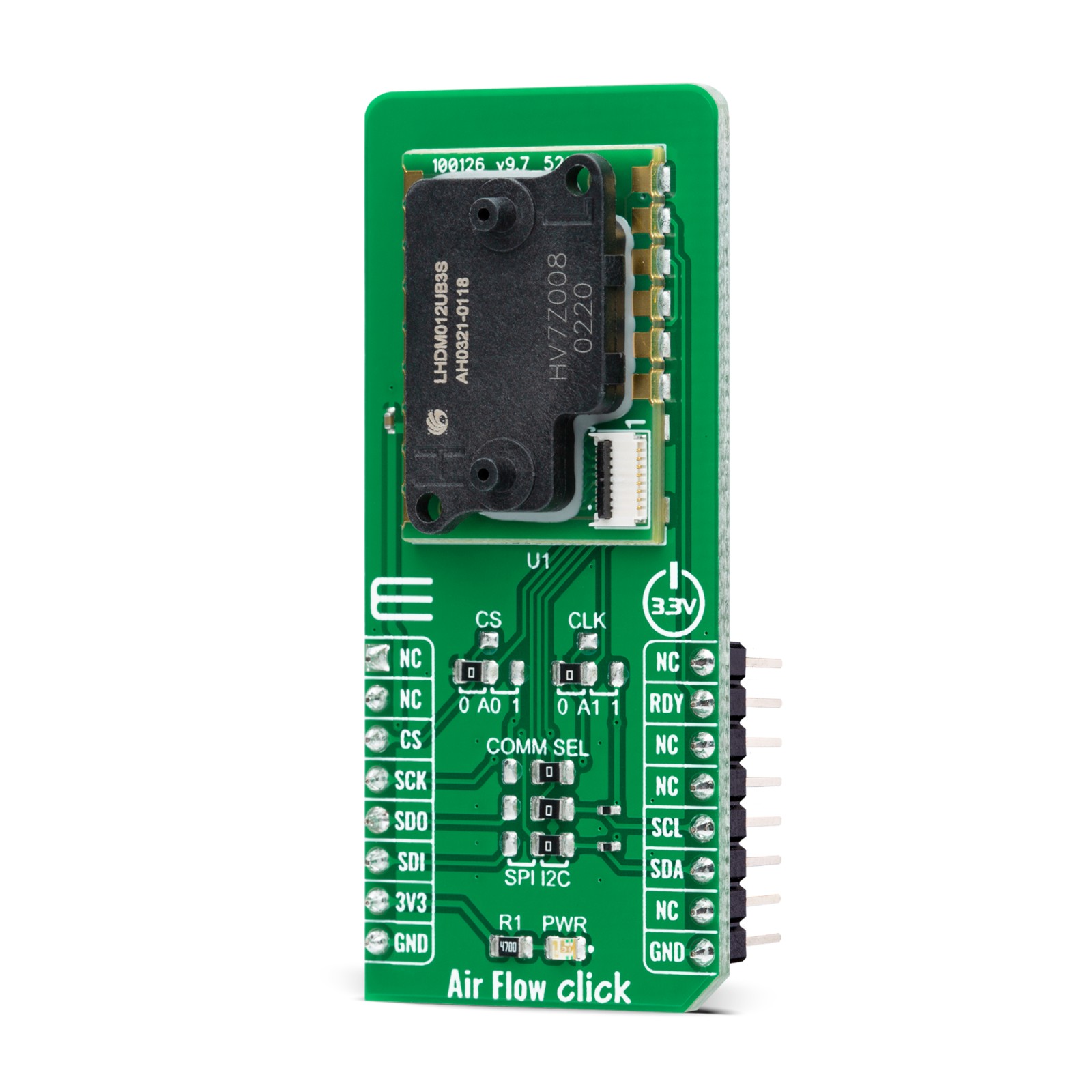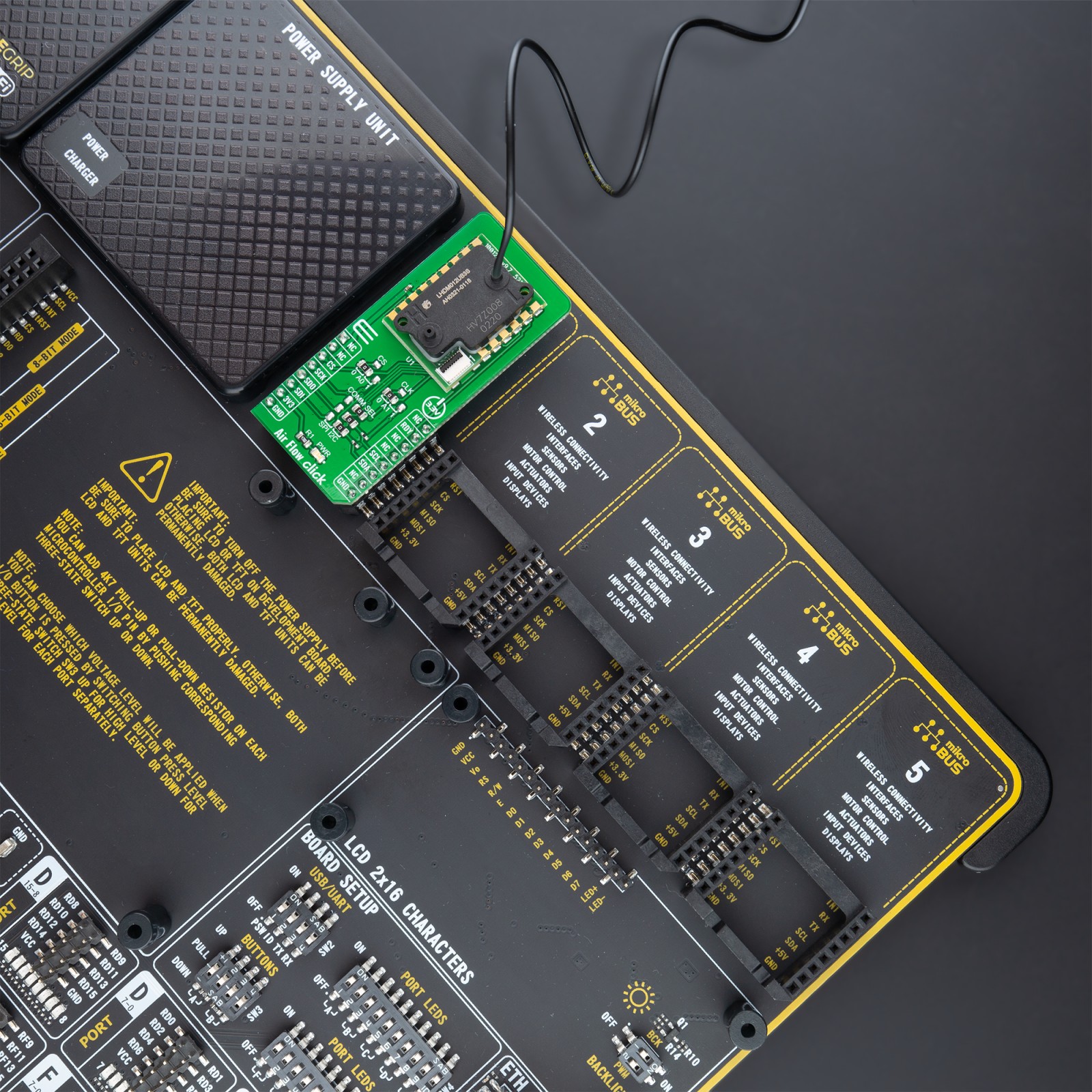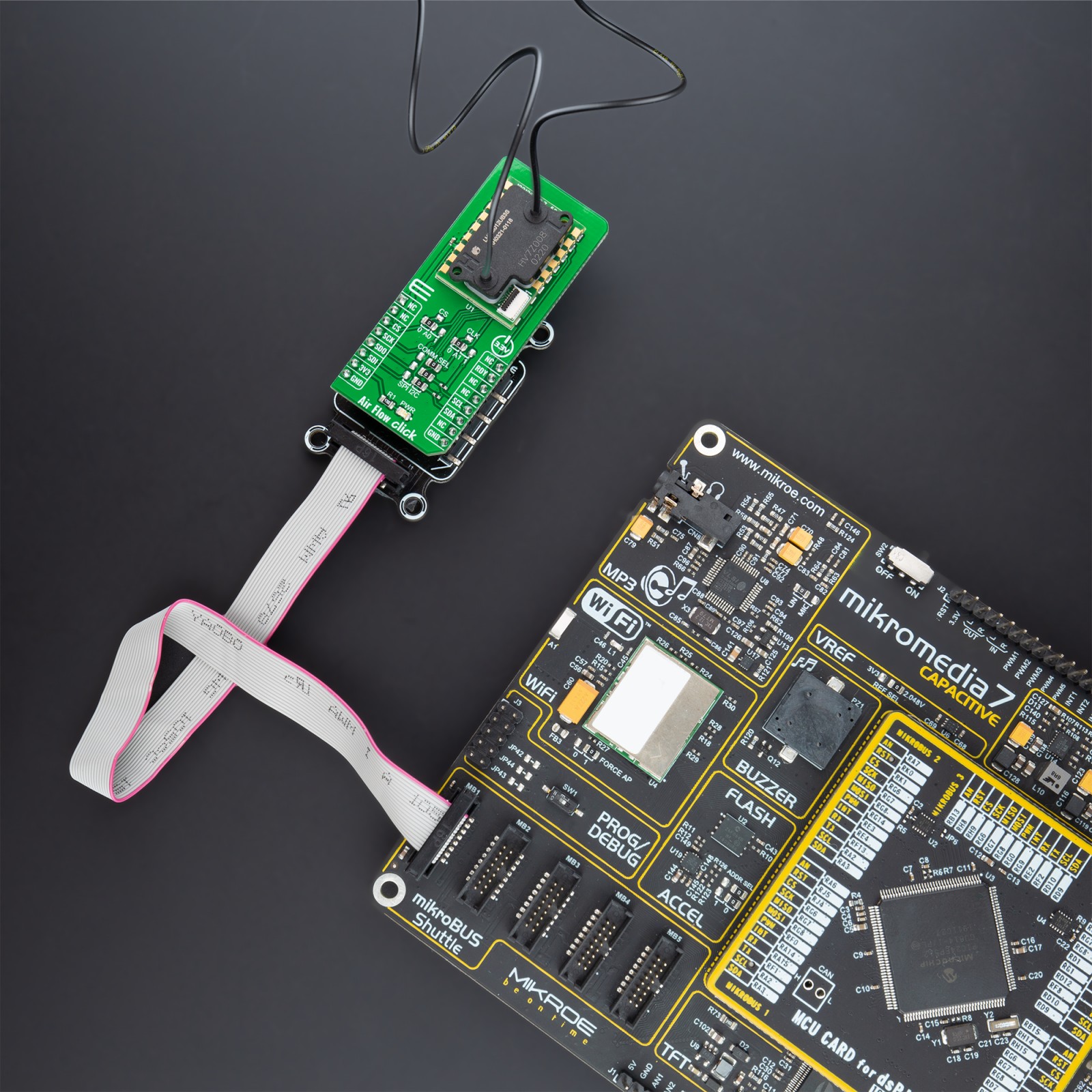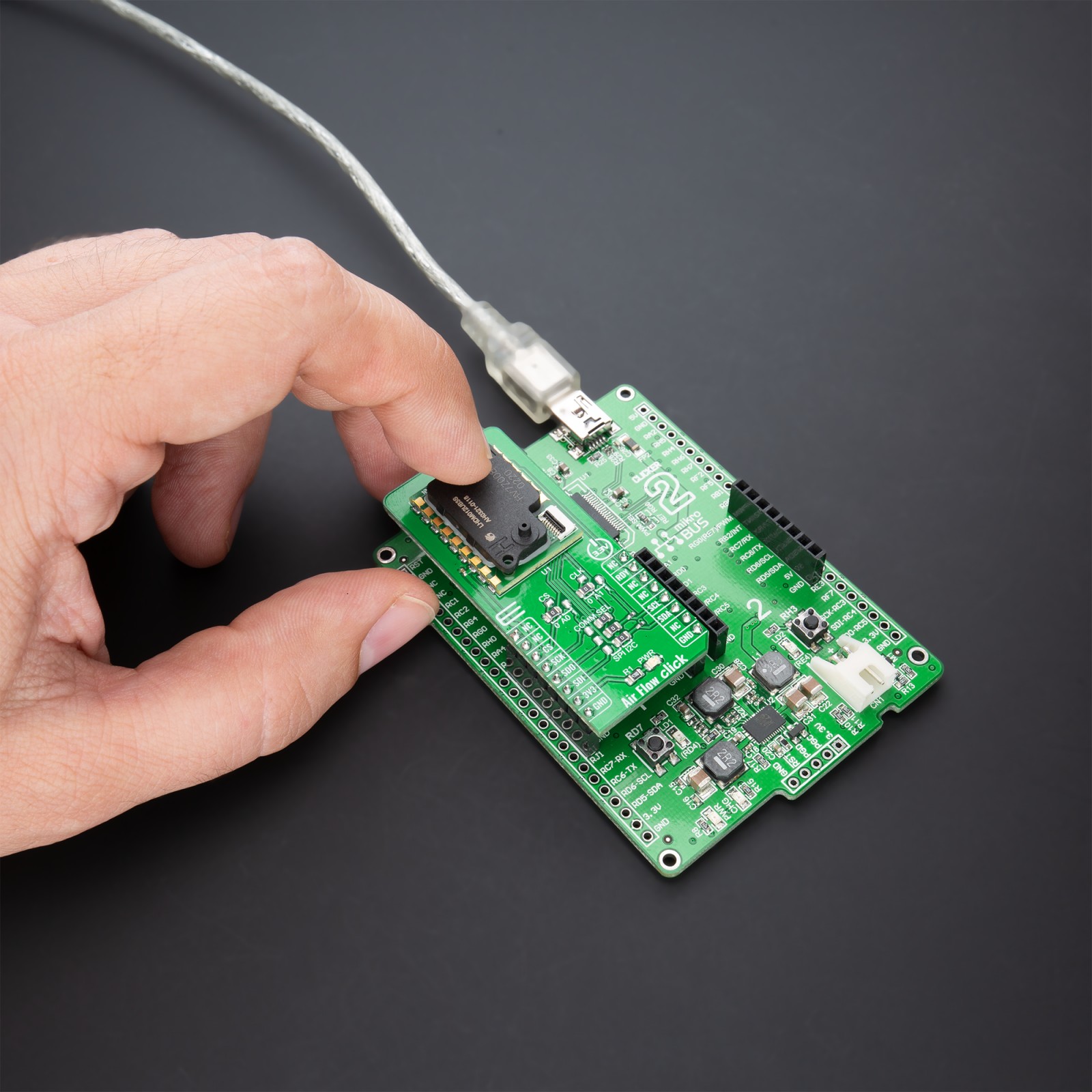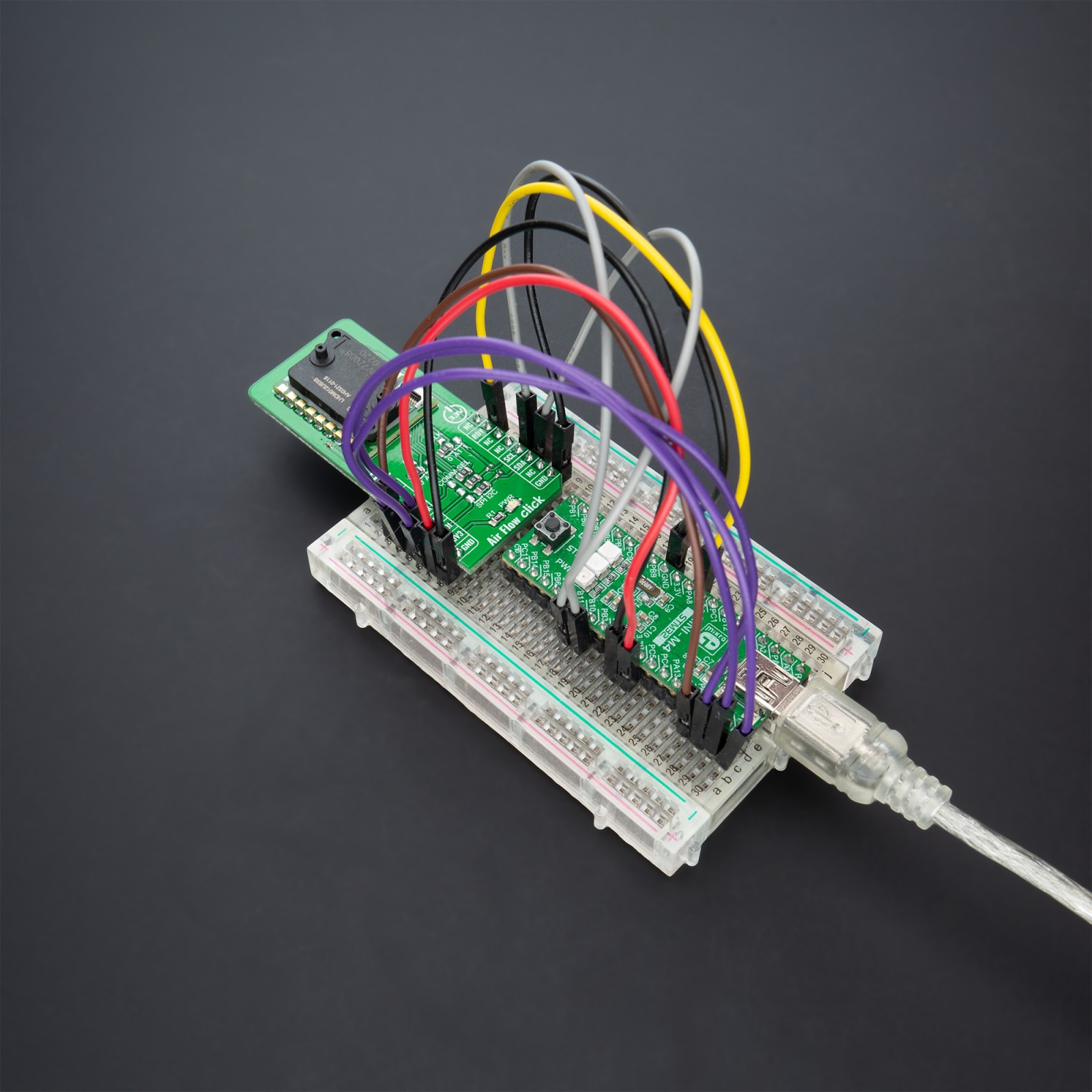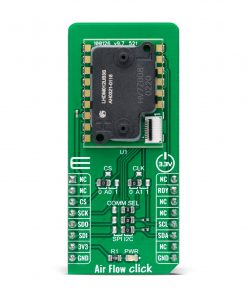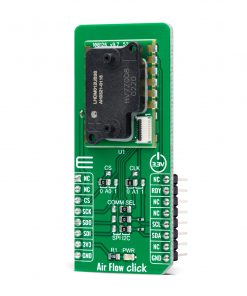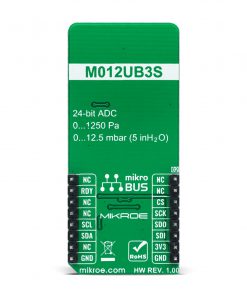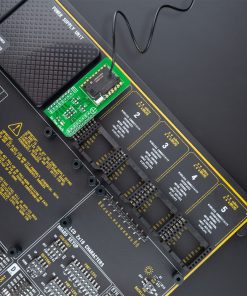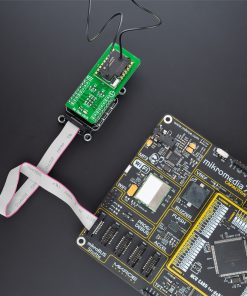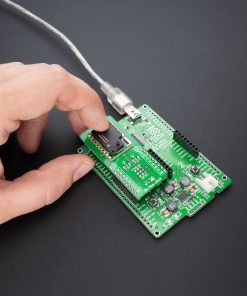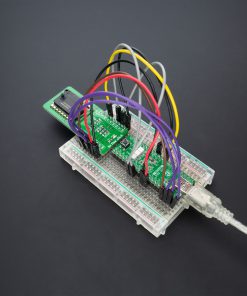Subtotal: R2,430.00
Air Flow Click
R810.00 ex. VAT
Air Flow Click is a compact add-on board that contains a flow-based 2-in-1 differential pressure sensor. This board features the LHDULTRAM012UB3, LHD ULTRA series micro-flow differential pressure sensor from First Sensor (part of TE Connectivity). This pressure sensor is based on thermal flow measurement of gas through dual micro-flow channels integrated within the silicon sensor chip to effectively maximize the dynamic range of the sensor ranging from 0 to 1250Pa. An on-board MCU with an accurate 24-bit ADC provides signal processing, including response from the two sensing elements, linearization, barometric compensation and temperature correction. This Click board™ is ideal for air flow monitoring and medical applications that demand high precision, extended measurement range, and the convenience of a single device.
Air Flow Click is supported by a mikroSDK compliant library, which includes functions that simplify software development. This Click board™ comes as a fully tested product, ready to be used on a system equipped with the mikroBUS™ socket.
Stock: Lead-time applicable.
| 5+ | R769.50 |
| 10+ | R729.00 |
| 15+ | R688.50 |
| 20+ | R662.58 |

 3D Motion Click
3D Motion Click  LPG Click
LPG Click  GPS Click
GPS Click 
